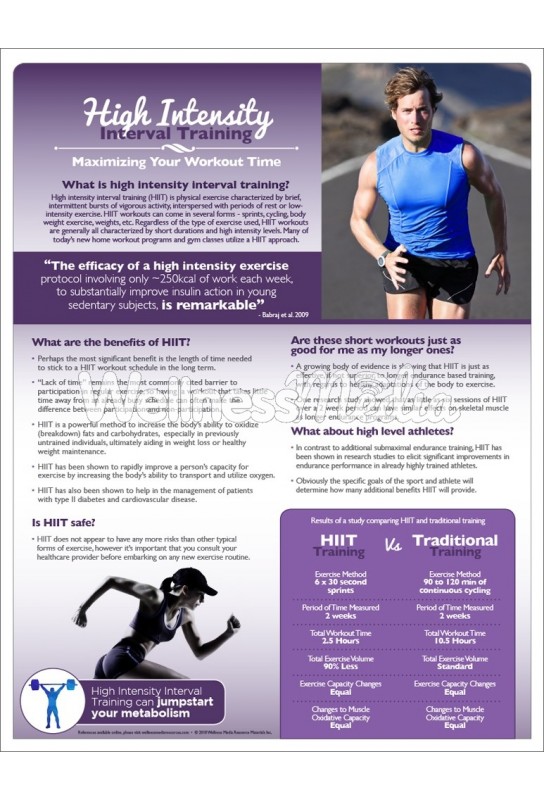Buzz Haven: Your Daily Dose of Trending News
Stay updated with the latest buzz in news, trends, and insights.
HIIT Happens: Why Short Bursts Are the New Long Run
Discover why high-intensity interval training is revolutionizing fitness! Short bursts could be the ultimate game-changer for your workout routine.
The Science Behind HIIT: How Short Bursts Burn More Fat
High-Intensity Interval Training (HIIT) has gained immense popularity in recent years, primarily due to its efficiency in burning fat in a shorter amount of time compared to traditional steady-state cardio. The science behind HIIT lies in the principle of excess post-exercise oxygen consumption (EPOC), which refers to the increased rate of oxygen intake following strenuous activity. During a HIIT workout, short bursts of intense exercise push the body to its limits, leading to a significant calorie burn both during and after the workout. This phenomenon allows HIIT practitioners to effectively reduce body fat while saving precious time.
Moreover, HIIT stimulates different energy systems in the body, leading to enhanced metabolic adaptation. By alternating between high-intensity efforts and lower-intensity recovery periods, the body becomes more efficient at utilizing fat as a fuel source. Studies show that individuals performing HIIT can experience a greater reduction in body fat percentage and improved insulin sensitivity compared to those engaging in moderate exercise. As a result, HIIT not only aids in fat loss but also contributes to overall health improvements, making it a highly effective workout methodology for those aiming to lose weight and maintain a healthy lifestyle.

HIIT vs. Traditional Cardio: Which is Right for You?
When it comes to choosing between HIIT (High-Intensity Interval Training) and traditional cardio, it's essential to consider your fitness goals, preferences, and lifestyle. HIIT involves short bursts of intense activity followed by periods of rest or lower-intensity exercise. This method has been proven to burn more calories in a shorter amount of time compared to traditional, steady-state cardio activities like running or cycling. Additionally, studies suggest that HIIT can boost metabolism and continue to burn calories even after the workout is complete, often referred to as the 'afterburn effect'.
On the flip side, traditional cardio exercises, such as jogging or swimming at a steady pace, can be more sustainable for longer durations and are often easier to integrate into daily routines. For beginners or those recovering from injuries, traditional cardio may be less intimidating and provide a solid foundation for building endurance. Ultimately, the right choice depends on your personal needs and fitness levels. You might even find that mixing both styles into your routine will provide the best results. Consider your preferences, and give HIIT or traditional cardio a try to see which fits your lifestyle better!
5 Common Myths About High-Intensity Interval Training Debunked
High-Intensity Interval Training (HIIT) has gained immense popularity in recent years, but with that popularity comes a plethora of misconceptions. One common myth is that HIIT is only suitable for athletes or those in peak physical condition. In reality, HIIT can be tailored to fit any fitness level, making it accessible for beginners, intermediates, and experts alike. Everyone can benefit from the efficiency and effectiveness of HIIT, as it allows individuals to modify exercises according to their abilities and gradually increase intensity over time.
Another prevalent myth is that High-Intensity Interval Training is too time-consuming and requires extensive equipment. This is far from the truth; HIIT can be performed in as little as 20-30 minutes and often utilizes bodyweight exercises that require minimal or no equipment. Additionally, this type of training promotes fat loss and muscle retention, making it an excellent choice for anyone looking to enhance their fitness regimen without dedicating hours at the gym.